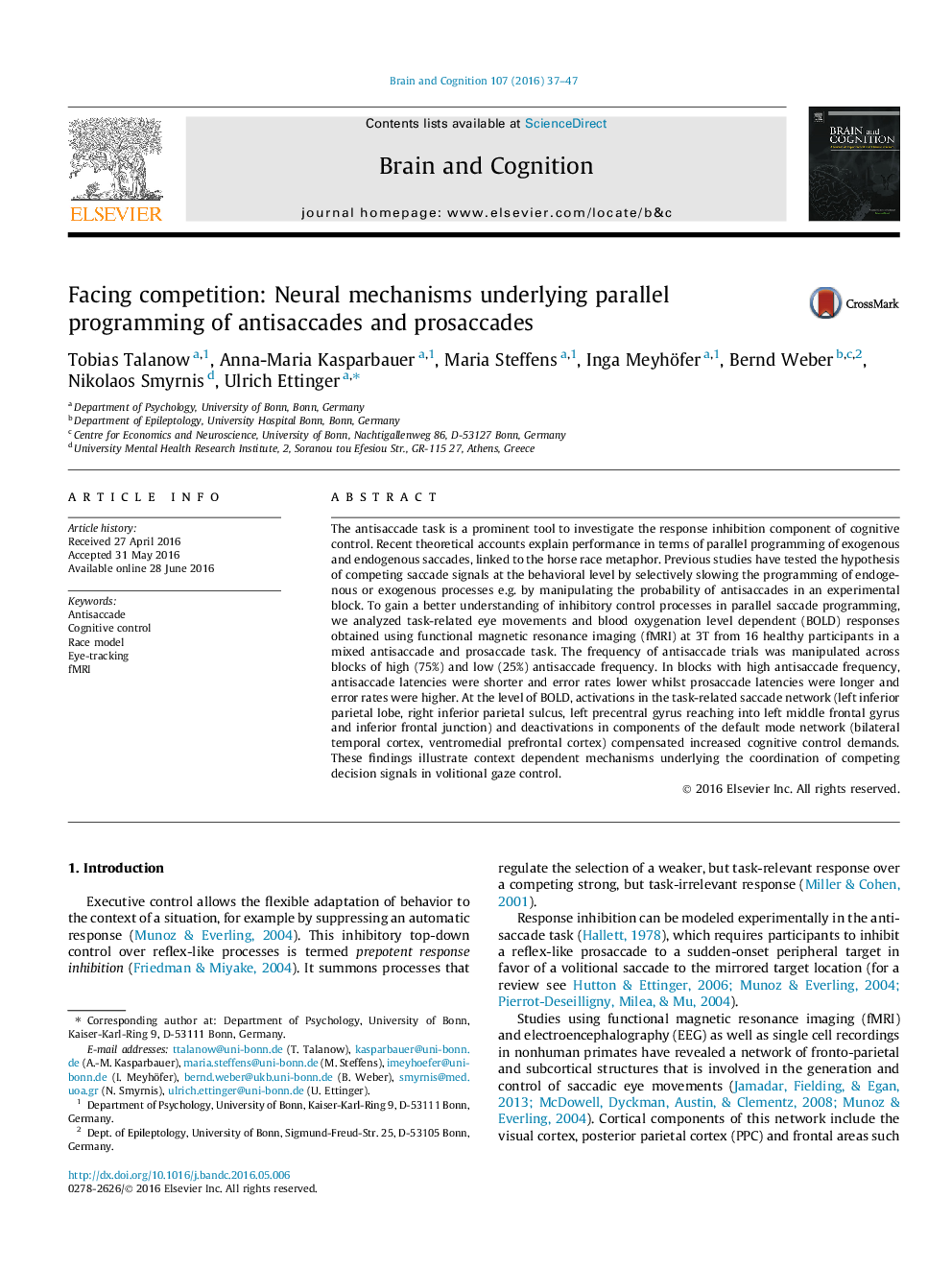| کد مقاله | کد نشریه | سال انتشار | مقاله انگلیسی | نسخه تمام متن |
|---|---|---|---|---|
| 924041 | 1473964 | 2016 | 11 صفحه PDF | دانلود رایگان |
• We studied the neural mechanisms of competition processes in the antisaccade task.
• Competition models assume that infrequency slows saccade programming.
• Latencies and errors of anti- and prosaccades increased with reduced frequency.
• Systematically slowed saccades showed BOLD signal changes in the saccade network.
• Context dependent mechanisms coordinate decision signals to facilitate gaze control.
The antisaccade task is a prominent tool to investigate the response inhibition component of cognitive control. Recent theoretical accounts explain performance in terms of parallel programming of exogenous and endogenous saccades, linked to the horse race metaphor. Previous studies have tested the hypothesis of competing saccade signals at the behavioral level by selectively slowing the programming of endogenous or exogenous processes e.g. by manipulating the probability of antisaccades in an experimental block. To gain a better understanding of inhibitory control processes in parallel saccade programming, we analyzed task-related eye movements and blood oxygenation level dependent (BOLD) responses obtained using functional magnetic resonance imaging (fMRI) at 3T from 16 healthy participants in a mixed antisaccade and prosaccade task. The frequency of antisaccade trials was manipulated across blocks of high (75%) and low (25%) antisaccade frequency. In blocks with high antisaccade frequency, antisaccade latencies were shorter and error rates lower whilst prosaccade latencies were longer and error rates were higher. At the level of BOLD, activations in the task-related saccade network (left inferior parietal lobe, right inferior parietal sulcus, left precentral gyrus reaching into left middle frontal gyrus and inferior frontal junction) and deactivations in components of the default mode network (bilateral temporal cortex, ventromedial prefrontal cortex) compensated increased cognitive control demands. These findings illustrate context dependent mechanisms underlying the coordination of competing decision signals in volitional gaze control.
Journal: Brain and Cognition - Volume 107, August 2016, Pages 37–47
